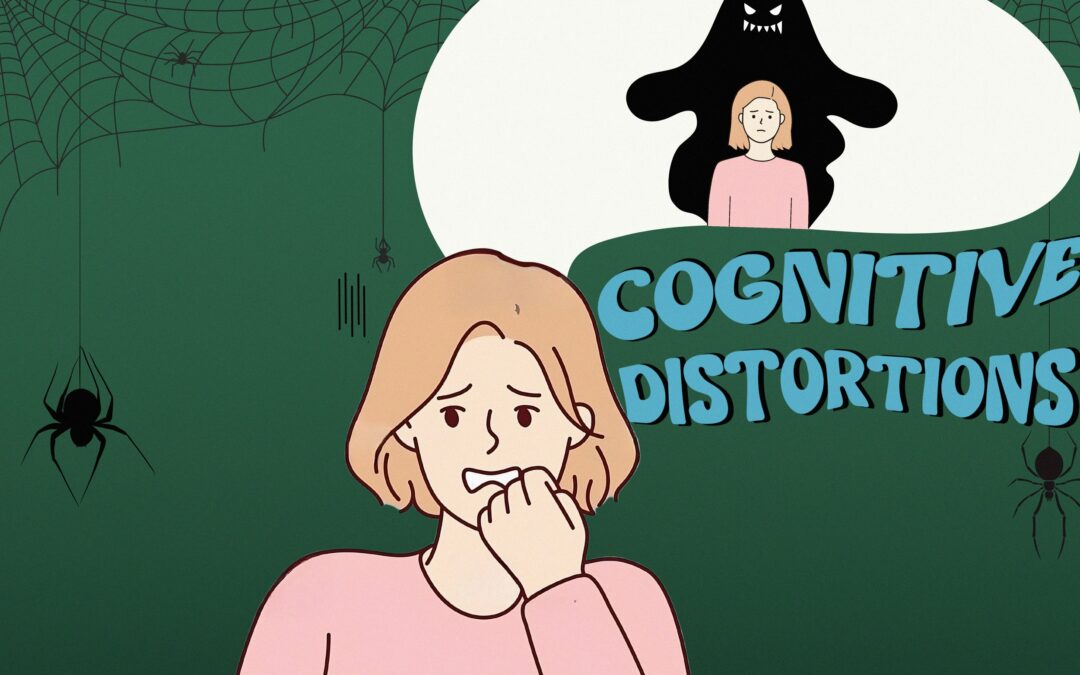The human mind is incredibly complex, weaving intricate narratives and interpreting our experiences to make sense of the world around us. However, sometimes, our mental processes can lead to skewed perceptions and beliefs, causing more harm than good. These skewed perceptions, known as cognitive distortions, can greatly influence our mental health. This blog post therefore aims to define cognitive distortions, explain common types, and provide practical strategies for challenging and overcoming them.
What Are Cognitive Distortions?
In simple terms, cognitive distortions are biased or irrational thoughts and beliefs that distort our perception of reality. These distortions often reinforce negative thoughts or emotions, leading us down a spiral of pessimism and self-defeating behaviors. This flawed thinking often underpins various mental health issues, such as depression, anxiety disorders, and personality disorders.
Therapists commonly address cognitive distortions in cognitive-behavioral therapy (CBT), a therapeutic approach designed to change patterns of thinking or behavior that are behind people’s difficulties. However, understanding and working on these distortions is not limited to therapy sessions; we can all learn to recognize and challenge our cognitive distortions.
Common Cognitive Distortions
-
Catastrophizing
-
Catastrophizing involves expecting the worst-case scenario to happen. If you’re prone to catastrophizing, a minor setback might seem like an insurmountable problem. For instance, if you make a small mistake at work, you might start thinking that you’ll get fired, which will then lead to financial ruin and broader life failure. Catastrophizing can cause severe anxiety and prevent you from taking action due to fear of failure.
-
-
Black-and-White Thinking
-
Also known as “all-or-nothing thinking,” black-and-white thinking involves seeing things in absolute terms. There are no shades of gray. For instance, if you don’t perform perfectly in some endeavor, you might see yourself as a total failure, ignoring any progress made or skills gained. This distortion can lead to low self-esteem, as it prevents you from recognizing your strengths and achievements.
-
-
Overgeneralization
-
In overgeneralization, you take one event or piece of evidence and generalize it to an overall pattern. For example, if you have an awkward interaction you might think that you are always awkward in social situations, leading to withdrawal from social activities or an intense fear of social interactions.
-
-
Personalization
-
Personalization occurs when you believe that everything others do or say is a direct reaction to you. For example, if a friend doesn’t return your call, you might assume they’re ignoring you because they’re upset with you, rather than considering other possibilities, such as they might simply be busy. Personalization can lead to feelings of guilt, shame, and inadequacy.
-
-
Mental Filter
-
This distortion happens when we focus almost exclusively on the most negative and upsetting aspects of a situation, ignoring any positive elements. For example, if you receive feedback after a presentation, you might focus only on a single negative comment, completely overlooking numerous compliments and positive remarks. This mental filter can significantly impact self-esteem and lead to an overly pessimistic outlook on life.
-
Recognizing and Overcoming Cognitive Distortions
While cognitive distortions can be deeply ingrained, they are not unchangeable. In order to change your cognitive distortions follow the steps outlined here:
-
Develop Awareness
-
Awareness is the first and perhaps most crucial step in overcoming cognitive distortions. By becoming conscious of your thoughts and emotions, especially during distressing moments, you can begin to notice patterns and recurring themes. Keeping a thought journal can be a beneficial exercise for this reason. Whenever you notice yourself feeling upset, anxious, or depressed, write down the thoughts that were running through your mind at that time.
-
-
Identify the Distortions
-
Once you’ve started logging your thoughts, attempt to review them from an outsider’s perspective. Can you see any cognitive distortions playing out? Use the descriptions provided earlier to help pinpoint which distortions are present in your thinking. This exercise might be challenging at first, as our cognitive distortions are often deeply entrenched and feel like truths, but with practice it will become easier.
-
-
Challenge Your Distorted Thoughts
-
After identifying the distortions at play, start challenging them. Question the evidence behind your thoughts and explore other possible interpretations of the situation. Is there concrete evidence supporting your thought, or are you making assumptions? Could there be another way to view the situation? What would you tell a friend who had this thought? These questions can help to “debunk” your distorted thoughts and perceive the situation more realistically.
-
-
Replace Distorted Thoughts with Rational Ones
-
Once you’ve challenged your distorted thoughts, the next step is to replace them with more rational and balanced ones. This process isn’t about swapping negative thoughts for blindly positive ones, but rather about finding a realistic and balanced perspective. For example, if you’ve been catastrophizing, remind yourself of the actual probabilities of your feared event happening, and reassure yourself of your ability to cope even if it does happen.
-
-
Practice and Patience
-
Lastly, remember that change takes time and practice. Cognitive distortions develop over a long time, so it’s unrealistic to expect them to disappear overnight. Be patient with yourself and persistently practice these steps. With time, you’ll likely find that you’re gradually becoming better at recognizing and challenging your cognitive distortions.
-
In Summary
Cognitive distortions, while pervasive and impactful, can be managed and changed through self-awareness, identification, and conscious challenge.
But remember, it’s okay to seek help. If you’re finding it difficult to manage cognitive distortions or if they’re significantly impacting your life, it might be helpful to reach out to a mental health professional. Therapists are specially trained to guide people through this change process, offering valuable support and expertise.


Recent Comments